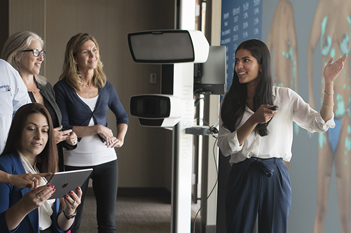Importance: Diverse racial and ethnic representation in clinical trials has been limited, not representative of the US population, and the subject of pending US Food and Drug Administration guidance. Psoriasis presentation and disease burden can vary by skin pigmentation, race and ethnicity, and socioeconomic differences. Overall, there are limited primary data on clinical response, genetics, and quality of life in populations with psoriasis and skin of color (SoC). The Varying Skin Tones in Body and Scalp Psoriasis: Guselkumab Efficacy and Safety trial (VISIBLE) is underway and uses strategies aimed at addressing this persistent gap.
Clinical Publications News
Late alopecia, defined as incomplete hair regrowth > 6 months following cytotoxic chemotherapy or > 6 months from initiation of endocrine therapy, negatively impacts quality of life and may affect dose intensity of adjuvant therapy. This study investigates the effect of oral minoxidil in women with chemotherapy and/or endocrine therapy-induced late alopecia.
Hair thinning affects upwards of 50% of women by age 50, impacting their social-emotional wellbeing. It is a condition now thought to be driven by a multi-factorial etiology, including diet and nutrition. Women following vegan, vegetarian, or other plant-based diets have specific needs for nutrients traditionally sourced from animals, which could affect hair health. To support hair growth and quality in women following a plant-based diet, a novel vegan nutraceutical (Nutrafol Women's Vegan Capsules, Nutraceutical Wellness, Inc., New York, NY) was evaluated for its ability to support hair health.
Objective: This study aimed to investigate the reproducibility and accuracy of the Visia® Complexion Analysis Camera System by Canfield Scientific for objective skin analysis.
Hair loss, complex due to individual and ethnic variations, remains difficult to visually quantify. Previous research suggests hair loss becomes noticeable to patients only after a 50% reduction in total scalp hair; however, no study has defined the minimal change in hair counts which result in noticeable hair loss. Our study sought to identify when hair loss becomes noticeable to professionals, thereby informing treatment initiation and adjustment and setting realistic patient expectations.
Burn injuries are the fourth most common type of trauma and are associated with substantial morbidity and mortality. The impact of burn injury is clinically significant as burn injuries often give rise to exuberant scarring. Hypertrophic scarring (HTS) is a particular concern as up to 70% of burns patients develop HTS. Laser therapy is used for treating HTS and has shown positive clinical outcomes, although the mechanisms remain unclear limiting approaches to improve its effectiveness. Emerging evidence has shown that fibroblasts and senescent cells are important modifiers of scarring. This study aims to investigate the cellular kinetics in HTS after laser therapy, with a focus on the association of scar reduction with the presence of senescent cells.
Methods for assessing three-dimensional (3D) breast volume are becoming increasingly popular in breast surgery. However, the precision of intraoperative volumetric assessment is still unclear. Until now, only non-validated scanning systems have been used for intraoperative volumetric analyses.
Preoperative prediction of breast volume is very important in planning breast reconstruction. In this study, we assessed the usefulness of a novel method for preoperative estimation of mastectomy volume by comparing the weight of actual mastectomy specimens with the values predicted by the developed method using the Vectra H2.
Facial aging is a gradual process that involves a complex interaction of several factors, including loss of subcutaneous volume, deep bone resorption and tissue laxity. To promote rejuvenation, it is extremely important to restructure the multiple layers of the face, initially by inducing collagen synthesis and tissue contraction. Thus, the combination of Poly-L-lactic Acid and Microfocused Ultrasound has proven to be increasingly effective for treating flaccidity and as a collagen biostimulating technique.
Background: Acne vulgaris remains the leading dermatological condition. The efficacy of laser treatment has been supported by many clinical studies, but studies investigating its multidimensional action are lacking. Aim: To comprehensively investigate the efficacy of 1450-nm diode laser treatment in patients with inflammatory acne and provide objective and subjective data for doctors in clinical practice.










